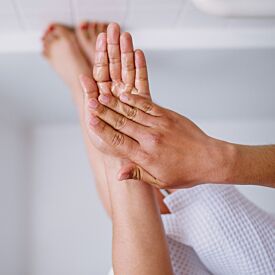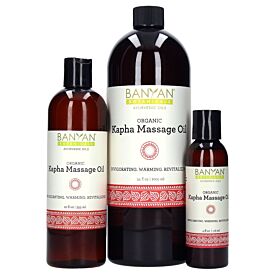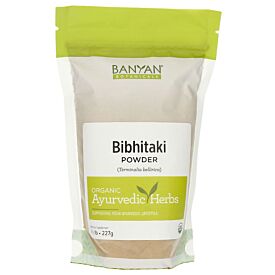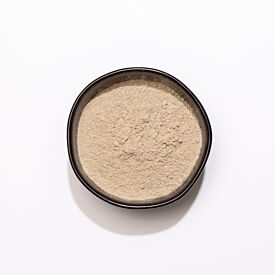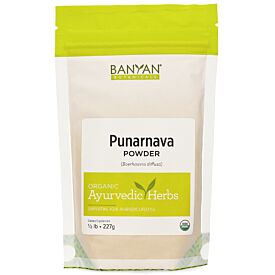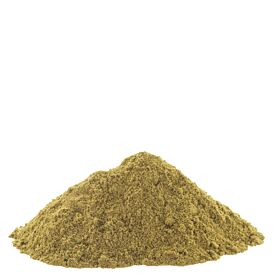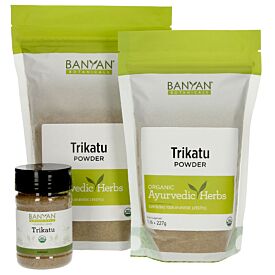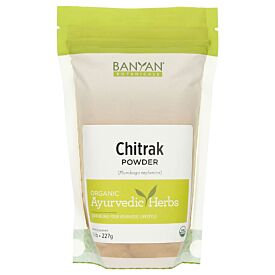Managing a Kapha Constitution
The Qualities of Kapha
“Snigdhah shita gururmandah shlakshno mritsnah sthirah kaphah”
Kapha is unctuous, cool, heavy, slow, smooth, soft, and static.
This Sanskrit line lists the main qualities of kapha and provides a key to understanding what it means to have a predominantly kapha prakriti, or constitution.
The kapha dosha personality and characteristics will reflect kapha’s earthy qualities—unctuous, cool, heavy, slow, smooth, soft, and stable. It is also dense, cloudy, and viscous. So, having a kapha-predominant prakriti means that these qualities express themselves generously throughout your mental, emotional, and physical make up.
Here are some ways you may find these qualities reflected in both your strengths and weaknesses:
- The unctuous quality can allow for smooth joint function but, if pronounced, can lead to an excessive buildup of bodily fluids.
- The cool quality may manifest as cool skin and a laid-back, cool temperament.
- Heaviness may manifest as a large, sturdy, grounded physical and emotional constitution and, in excess, as being overweight or experiencing a subjective feeling of heaviness in the mind.
- Slowness may manifest as a slow gait or a slow, steady pace that you can maintain. In excess, you may get stuck in a pattern that is not healthy and supportive for you.
- Softness can manifest as a soft heart that is easily empathic. Another manifestation of this quality is having soft skin.
- Stability can be an asset that friends, family, and colleagues probably recognize and perhaps lean on, but in excess it can turn into stubbornness or sluggishness. You could become so stable that you are disinclined toward any physical activity.
- Density can manifest as good stamina and strong, well-formed muscles and bones. This enables the kapha constitution to withstand vigorous exercise. This quality is also responsible for dense, luxurious hair.
Decreasing or Balancing Kapha
Like Increases Like
A basic tenet of Ayurveda is “like increases like.” Therefore, increasing the inherent qualities of kapha will increase kapha in your body, mind, and spirit.
For example, because kapha is inherently cool, heavy, and wet—cold weather, heavy foods, or wet seasons tend to increase kapha. Knowing this can help identify which lifestyle choices, foods, or environments will bring balance to your constitution.
Example: You are a kapha individual. Kapha is heavy, dense, wet, cold, and static. If you eat a large bowl of ice cream (heavy, dense, wet, and cold,) at night (cold) in winter in Vermont (cold, wet), you can be sure that kapha will increase in your system. The next morning you may find yourself with excess mucous, having gained a pound or two (the increase of heavy and dense), and less likely than ever to get up and move (static).
Tastes That Increase and Decrease Kapha
Along with the main qualities of kapha, it is also helpful to know those tastes that increase or decrease kapha.
- Sweet, sour, and salty tastes increase kapha by increasing bulk and moisture in the body and mind, and by perpetuating the qualities of kapha. An example of the naturally sweet taste is wheat; of sour, a pickle; of salty, salt.
- The pungent, bitter, and astringent tastes traditionally decrease kapha by drying the body and providing the opposite qualities to those of kapha. An example of the pungent taste is chili pepper; of bitter and astringent (which are often coupled), many leafy greens and herbs.
Using Opposites to Maintain Balance
Each of us has a unique proportion of the three doshas in our prakritis. Ayurveda teaches us that if a dosha increases beyond its original, natural proportion for our unique constitution, it fosters an environment where imbalance can flourish.
It is common for our predominant dosha (vata, pitta, or kapha) to increase more quickly than other doshas because we tend to perpetuate what we know best. For example, if your dominant dosha is kapha, due to the slow quality of kapha you may be naturally inclined toward calming activities. In excess, this quality may lead to stagnation.
In other words, we want to incorporate things that decrease the excess dosha by providing the opposite qualities to it. For example, if kapha has increased due to excess stagnation in your life, activity is the solution. If it has increased due to excess coolness, you can use heat to bring balance. Too much heaviness? Use lightness.
One of the practical aspects of Ayurveda is that anything can be used to restore healthy balance because everything that exists has a quality. This includes but is not limited to: herbs, foods, drinks, environments, colors, smells, and lifestyles.
Qualities opposite to kapha are predominantly warm, dry, light, and active. It is therefore best for kapha individuals to seek out physical and emotional environments, routines, and foods that possess these opposite qualities.
Using Diet to Balance Kapha
Because of the slow, heavy qualities of kapha, this dosha type can tend to have a sluggish digestive capacity and a slower metabolism. They usually don't have a ravenous appetite, but can experience heaviness after meals. A kapha individual does well to have a moderate amount of warming, light, freshly cooked foods to maintain balance and support healthy digestion.
Because pungent, bitter, and astringent tastes decrease kapha, these tastes should be predominant in your diet.
Herbal Support to Balance Kapha
Using Ayurvedic herbs to manage your constitution compliments the changes you make in your diet and lifestyle.
Bibhitaki, chitrak and punarnava are three of the primary herbs used to remove excess kapha from the body and maintain balance. All of these herbs can be found in our Healthy Kapha herbal tablets.
Climate and Lifestyle to Balance Kapha
Although kapha may be able to tolerate a wide variety of temperatures, the ideal environment is a warm and dry one.
When it comes to exercise, active sports like jogging, hiking, biking, or competitive sports, especially in the morning, are best. These activities will get the blood moving and the heart pumping, helping kapha keep motivated and light.
Aromatic, invigorating, or heating scents, and light and lively music are also great for kapha. A vigorous, daily, 10–20 minute self-massage with warm sesame oil or Kapha Massage Oil will help keep kapha from becoming stagnant.
One of the most balancing things for kapha is activity. It is well worth the effort for the kapha individual to find that golden key to what motivates them. For example, if you have a difficult time motivating yourself to exercise regularly, you could enter yourself in a local bike race. This may give you just that extra push and you may be surprised by how much you enjoy yourself.
Yoga for Kapha Types
The practice of yoga goese hand in hand with Ayurveda. Visit our guide on kapha-pacifying yoga for information on how to customize your yoga practice to warm your body, uplift your spirits, and help keep kapha balanced.
Famous Kapha Examples
Oprah Winfrey: Large, luminescent eyes and frame. Compassionate. Generous.
Luciano Pavarotti: Deep, resonant voice. Large frame.
Now What?
Knowing our prakriti is useful because it increases awareness of our natural strengths and challenges. It helps us understand and embrace our unique nature and provides a positive first step toward understanding our health.
The second step is to understand if and how we have strayed from our natural, healthy constitution. In Ayurveda, we determine this by comparing our prakriti (natural constitution) with our vikriti (or current condition).
If you have not already, take the dosha quiz to determine your current state of balance and get started on your path to optimal well-being.
COPYRIGHT
The above information was written by Dr. Claudia Welch for the exclusive use of Banyan Botanicals. The information is protected by copyright and may not be reprinted without the written permission of Dr. Claudia Welch and Banyan Botanicals.
DISCLAIMER
The above prakriti test and results are intended as a convenient tool to provide practical information on your Ayurvedic constitutional type. It is not intended to diagnose, treat, cure or prevent any disease. In addition, it should be noted that while this information should be considered highly useful it is not meant to replace the skilled constitutional analysis of a professionally trained Ayurvedic Physician.


